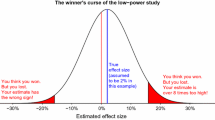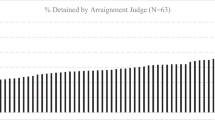Abstract
Objective
Our objective was to examine how Amendola and Wixted (A&W, 2014) arrived at their conclusion that eyewitness identifications of suspects from simultaneous lineups were supported better by corroborating evidence than were identifications from sequential lineups. Their cases came from a randomized field experiment by Wells et al. (2014).
Methods
We gathered information from the A&W article, examined an earlier, more complete report by Amendola et al. (2013), and then confirmed our numbers with Amendola.
Results
We discovered that the small subsample (n = 52) on which A&W’s entire conclusion was based was unrepresentative of the larger set of cases (N = 236) in a way that was heavily biased in favor of the simultaneous lineup. Specifically, although the larger data set showed that simultaneous and sequential lineups produced the same rate of adjudicated guilt, their small subsample of 52 cases was highly imbalanced: Among the 30 sequential cases selected, 16 were drawn from the adjudicated-guilty set and 14 were from the not-prosecuted set; among the 22 simultaneous cases selected, 17 were drawn from the adjudicated-guilty set and a mere five were from the not-prosecuted set. This problem could not be known from the article itself.
Conclusions
Because adjudicated guilty cases had more corroborating evidence than not-prosecuted cases and because simultaneous and sequential lineups produced equivalent rates of adjudicated guilty outcomes, the small sub-sample of 52 should have reflected this same equivalence. Instead, the sub-sample was stacked against the sequential and in favor of the simultaneous and A&W’s conclusion is not warranted.
Similar content being viewed by others
Notes
We were initially able to only estimate these sample sizes by making some mathematical inferences from the data. However, we have now confirmed these numbers with Karen Amendola.
References
Amendola, K., Valdovinos, M. D., Slipka, M. G., Hamilton, E., Sigler, M., & Kaufman, A. (2013). Photo Arrays in Eyewitness Identification Procedures: Follow-up on the Test of Sequential versus Simultaneous Procedures (Study One) and An Experimental Study of the Effect of Photo Arrays on Evaluations of Evidentiary Strength by Key Criminal Justice Decision Makers. Unpublished manuscript, Police Foundation, Washington, DC.
Amendola, K., & Wixted, J. T. (2014). Comparing the diagnostic accuracy of suspect identifications made by actual eyewitnesses from simultaneous and sequential lineups in a randomized field trial. Journal of Experimental Criminology. doi:10.1007/s11292-014-9219-2.
Hernan, M. A., Clayton, D., & Keiding, N. (2011). The Simpson’s paradox unraveled. International Journal of Epidemiology, 40, 780–785. doi:10.1093/ije/dyr041.
Wells, G. L., Steblay, N. K. & Dysart, J. E. (2014). Double-blind photo-lineups using actual eyewitnesses: An empirical test of a sequential versus simultaneous lineup procedure. Law and Human Behavior, in press.
Author information
Authors and Affiliations
Corresponding author
Rights and permissions
About this article
Cite this article
Wells, G.L., Dysart, J.E. & Steblay, N.K. The flaw in Amendola and Wixted’s conclusion on simultaneous versus sequential lineups. J Exp Criminol 11, 285–289 (2015). https://doi.org/10.1007/s11292-014-9225-4
Published:
Issue Date:
DOI: https://doi.org/10.1007/s11292-014-9225-4




